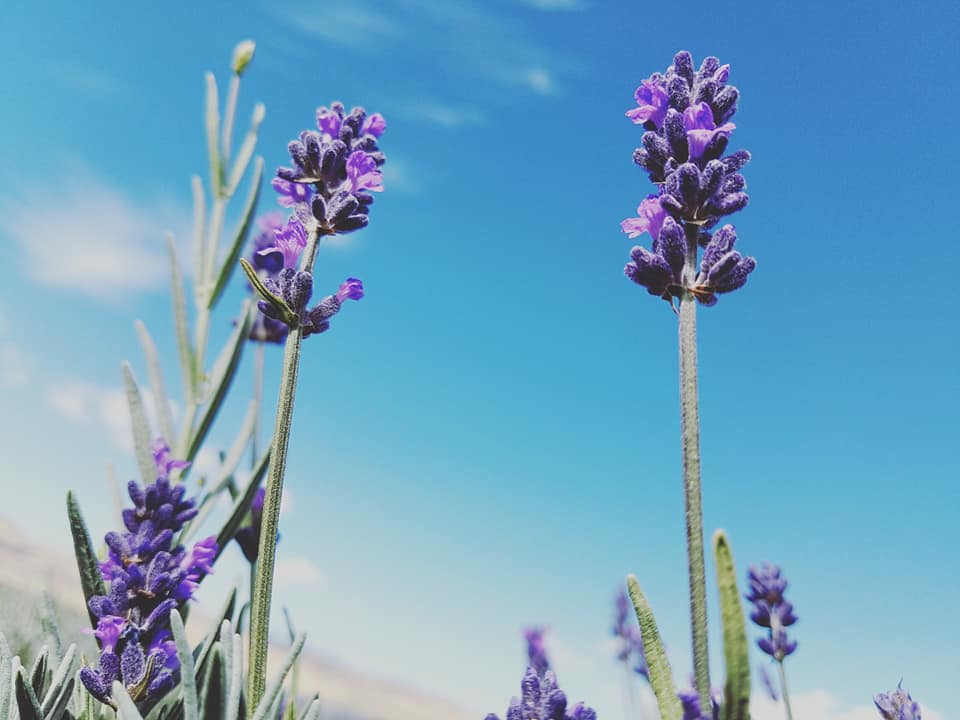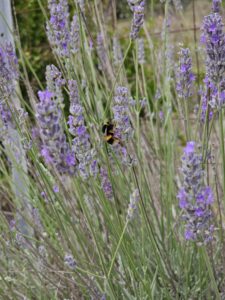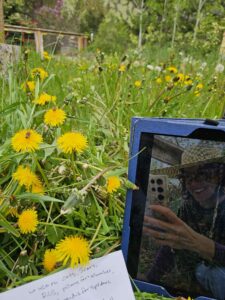Lavender – Rainbow Plant Profile
It feels impossible that I haven’t already profiled Lavender. I’m in the midst of a Master Gardener’s Course through Missoula County’s Extension Office & MSU. I was assigned Lavender as my plant to report on this evening, hence this two-birds situation I’m in. I’m here to share.

Lavandula angustifolia or officinalis is native to the Mediterranean, but she happily grows in our yarden, in Montana. It is said that one either loves or really doesn’t love this aromatic, bushy, tender perennial (often lasting 5-7 years). She likes full sun, dry summers, and average to fertile, alkaline – well drained soil. Lavender grows in zones 5-9. She can reach heights of 24″ and a spread 24″, so she likes a bit of space if available.
This image of a bumblebee investigating Lavender was taken in Sardinia. Did you catch our other featured plant from Sardinia? Check our post about Myrtle! Bees and butterflies and hummingbirds LOVE Lavender, but she is also an amazing insect repellent. The hybrid varieties that contain more camphor may be a more potent repellent. That’s likely what you’ll find in a small bag placed in a dresser drawer to ward off moths.
We use Lavender in our Bug Off!, Pit Stick (with the exception of the unscented version), King Salve and many of our blends. It is probably the plant we use the most of in our products.
Identifiers
Lavender is part of the Mint family and bears spikes (sometimes branched) of small flowers in varied shades of violet blue that stand above green silvery foliage. The base of the plant becomes woody after the first year of bloom. Trimming is best to do after flowering occurs, which can happen the majority of the summer in Montana. The aroma of Lavender is another good identifier, for the sniffers out there.
Herbal Actions
Lavender is an adaptogen, sedative, nervine, aromatic, carminative, antispasmodic, antidepressant, nervine & I’m probably missing a few. It’s literal magic for the body, unless of course you have an allergy to the plant.
How do we use Lavender in our Family?
Oof, the ways we use this plant in our household are too many to cover in one short blog post. I’ll make a short list and encourage you to get a bottle of the essential oil (from us or a trusted source) and plant this plant in your yard, if you’re able.
Please remember, I am NOT a doctor. I’m only sharing the ways my family uses this plant in our everyday life, not suggesting you do the same.
Okay here goes: We use Lavender in/on cuts, burns, sunburns, bee stings, insect bites, as a sleep aid, inflammation, period cramps, menopausal hot flashes, for quick pain relief, for seasonal allergies, respiratory support, emotional support, RLS, dandruff, acne, and almost daily on our dryer balls.
Meet Lavender (IRL)
Just for the record, this is the current state of my garden. I weeded around one of my Lavender plants so I could share, but I didn’t weed the rest of my garden (yet). The state of my yarden makes the bees, both native and honeybees, so happy.
I always welcome the opportunity to share my love of dandelions with the world, in hopes that I can shift you to team dandelion. If you have an extra moment, read our article about how beneficial and powerful they are. We need them, especially in May for our bees.
Go plant some Lavender! You won’t regret it. xo
Who won that Earth Day Giveaway?
Congrats to Katherine K. of St. Louis! We hope you’re enjoying your treasures. Subscribe to our list if you want to be notified of our future giveaways!


